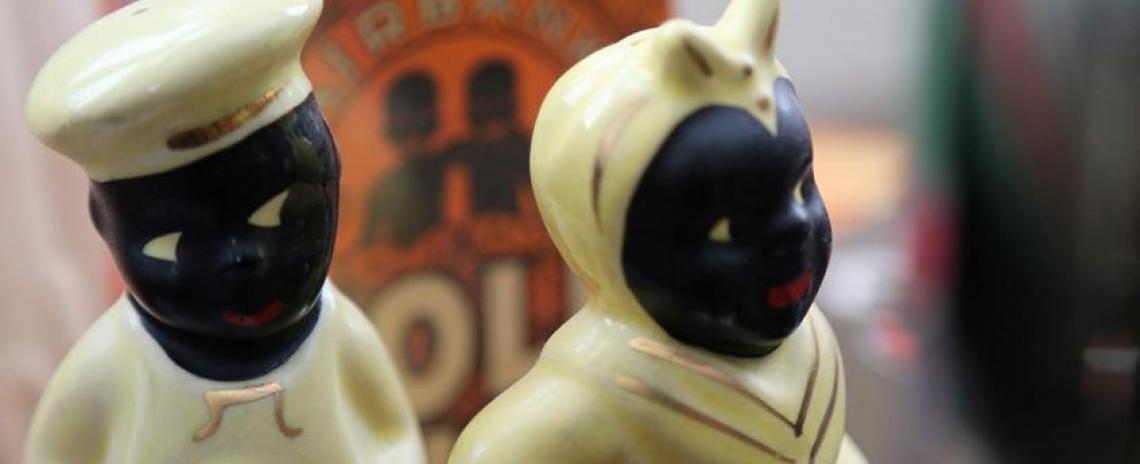Throughout the 27th Annual Whitaker St. Louis International Film Festival (SLIFF), the writers at the Lens will be spotlighting their favorite narrative and documentary films on this year's festival schedule. Each day, our critics will discuss can't-miss festival highlights, foreign gems that have already made an international splash, and smaller cinematic teasures that might have overwise been overlooked – just in time for you to snap up tickets.
Within the past year, American cities including Baltimore, Md., Austin, Tex., and Durham, N.C., have seen their Confederate symbols toppled to the ground. Statues, plaques, and flags have been removed either by governmental action or by the force of protestors. The erasure of these signposts is an important movement forward for the country to work through its past and present sins of racial violence and injustice — a righteous acknowledgement of support to black Americans. Those opposed to the removals would say this is erasing “history,” ignoring the objects’ purposes as celebratory rather than contextual.
Chico Colvard’s documentary Black Memorabilia digs deeper into a reckoning with this past, exploring what some might perceive as “smaller” documents of United States’ oppression of people of color: the stereotypes of mammy, Uncle Tom, zip coon, and so on that proliferate through the American popular consciousness via Saturday morning cartoons, antique coin banks, and other seemingly innocuous everyday artifacts. Colvard eschews typical didactic documentary forms and creates a kaleidoscopic tryptic about the power of these ever-present black cyphers — works made by white Americans in order to pigeonhole their black compatriots as lesser beings.
Memorabilia graciously allows for consideration of this topic from four differing angles, permitting the viewer a dialog with the people central to each part of the film’s three main sections. The film borrows the chapter structure of a silent film for its mode of storytelling. In doing so, Colvard slyly acknowledges the role of his chosen artistic form — cinema — in doling out insidious propaganda. (D.W. Griffith’s groundbreaking and thoroughly racist The Birth of a Nation [1915] gets a shoutout.) In further pushing non-fiction limits, a title card boldy defines “hybrid documentary” before the film begins in earnest — the reason for which remains a mystery until its end.
The “Manufacture” chapter uses first-person narration to tell the tale of a working-class Chinese ironworker, Jian, who makes replications of turn-of-the-20th century piggy banks in the form of a smiling black figure with an unspeakable name. Having inherited the trade from her family, she spends her time iron-casting and painting, stating she sees it as a kind of personal poetry when she looks at her brush strokes in the overdrawn red lips of her black caricatures. Jian acknowledges her own people’s history of subjugation as her family watches a story about Black Lives Matter protests on the national news, seeing parallels between them and people of color in the United States.
In “Consume”, antiques dealer, Kim lacks any of the guilt Jian begins to exhibit towards the end of her story. She’s a white Virginian who inherited her own trade in dealing with the racist objects of American history: attending roadshows to sell the original knickknacks that Jian replicates. Kim keeps claiming her ephemera is “black history,” choosing to ignore their origins. Colvard doesn’t confront this contradiction, instead allowing black Brooklyn artist Alexandria Smith to discuss her own relationship to the negative representations in the film’s final chapter, “Reclamation". If “Consume” is the most traditionally-told of the three segments, “Reclamation” is a free-flowing personal essay that allows its subject to explore the ambiguity inherent in the use of stereotyped black figures in her own art.
Throughout Black Memorabilia, the viewer is aware that something within it must be a work of fiction, given its earlier self-identification as a “hybrid documentary.” Colvard reveals the integration in his epilogue, uncovering that a confession by one of the characters was his own act of reclamation and wishful thinking. This turn doesn’t pull the rug out from under the audience. Instead, the director daringly asks them to re-evaluate the feeling with which the disclosure initially struck them, empowering them to reject, reproach, and reclaim dangerous stereotypes of black Americans.
Black Memoribilia screens Saturday, Nov. 10 at 6:30 p.m. at the Missouri History Museum. The event is free and open to the public. There will be a post-film discussion led by D.B. Dowd, professor of Art and American Culture Studies at Washington University, and Vernon C. Mitchell Jr., curator of Popular American Arts and Culture at Washington University Libraries.


